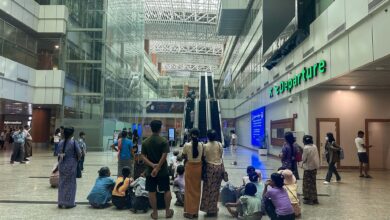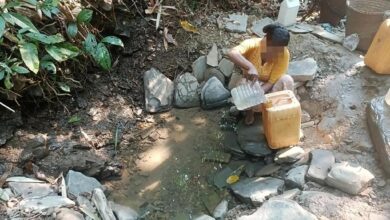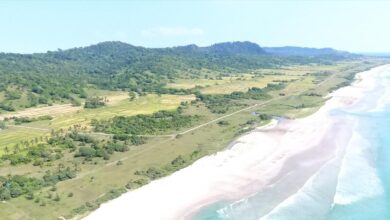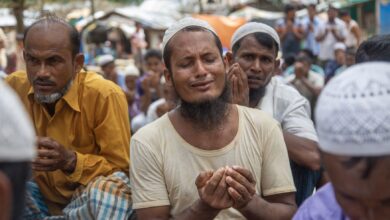
Since February 1, Myanmar and the world have been witness to daily scenes of heinous violence unleashed by the country’s self-declared rulers. Some of the worst abuses, however, have been those hidden from plain sight.
Of the thousands of people who have been arrested and detained over the past 11 months, many have been subjected to torture at the hands of their captors.
In most cases, the assault on bodies and minds begins from the moment of capture. Countless videos show regime forces beating and shouting obscenities at helpless protesters and others who fall victim to the junta’s indiscriminate and often deadly crackdowns.
This is often followed by days or weeks of intense interrogation. Most who survive these sessions are left with permanent scars that serve as testimony to the regime’s cruelty and determination to cling to power at all costs.
While these survivors are more fortunate than many others who have died in custody since the coup, their testimony attests to the junta’s total disregard for human life.
Myanmar Now spoke to several former prisoners about how they were treated during their time behind bars. What it found was that violence appears to be an end in itself for this regime; its methods are often less concerned with extracting information than with inflicting pain for its own sake.
What follows is the testimony of some of these prisoners, who have shared their experiences with us in order to provide some insight into the junta’s system of instilling a sense of powerlessness in those who are completely under its control.

‘Hell room’
A former prisoner who used the alias “P2” said that his torture began with a black sack being placed over his head.
In total darkness, he was transported to an undisclosed location. When he was finally able to see again, he was chilled by what he saw.
He found himself in a 10”x10” room with a table, some chairs, and five armed agents of the regime. For the next 20 days, he would spend three hours a night in this room with these men.
“To call it a hell room would be an understatement,” said P2, who was arrested during a crackdown in early April.
The pain was unrelenting, he said. His interrogators inflicted one form of torture after another, never giving him a chance to recover from one before moving on to the next.
“Even as they were whipping me, hitting me with batons, or pushing lit cigarettes into my skin, they were busy getting electrical wires ready to electrocute me,” he said.
His tormentors were so preoccupied with making him suffer that they barely asked him any questions. While one stabbed him in the leg, another would burn holes in his back with a cigarette. Others simply kicked him with their combat boots.
His ankles were also attacked, hit with the sharp edges of broken bricks. And all the while, a bright light was shone in his eyes to keep him from passing out.
Three weeks after his arrest, on April 28, he was sentenced to three years in prison for incitement. He was sent to Insein Prison, where he remained until his release five month later.
His back, legs, stomach and thighs are covered with scars from his ordeal.


Until the coup, P2 worked as a supervisor for a construction company. When protests broke out in Yangon’s North Okkalapa Township, he joined a group that shielded the protesters from attack. That was how he ended up in regime custody.
Despite their best efforts, the junta’s henchmen failed to break his spirit. The 38-year-old is currently in a liberated area, where he is receiving military training to join the armed struggle against Myanmar’s dictatorship.
‘Slaughterhouse’
Twenty-five-year-old “Ni Maung” had been taking part in anti-coup protests since early February. Months later, he was arrested and accused of bringing weapons into Yangon and providing training on how to make explosives.
For 20 days after his arrest, he was held at the notorious Aung Tha Pyay interrogation centre in Mayangone Township. During this time, he was subjected to various forms of torture, including beatings and electrocution, he said.
The torture began from the moment he arrived. He was handcuffed with his hands behind his back and forced to kneel on the ground as five men beat him so viciously that it was like they were butchering an animal, he told Myanmar Now.
“It was more like a slaughterhouse than an interrogation centre,” he said. “They seem to view people as demons who need to be exorcised.”
After this ordeal, he was transferred to another interrogation centre in Shwepyithar Township where he was not subjected to the same treatment. A week later, on June 19, he was sent to Insein Prison after being found guilty of incitement under Section 505a of the Penal Code.
It was more like a slaughterhouse than an interrogation centre
He remained there until he was released as part of an amnesty on October 18.
His back, thighs, stomach, and legs all bears scars of his torture. The worst damage, however, was internal.
“I can’t sit up for very long now because of the pain in my back, and I can’t hear well from one of my ears. I think a few bones may have been crushed, as well,” he said.

‘One beating after another’
Saw Han Nway Oo, a 24-year-old transwoman, spent 24 hours in the interrogation centre inside Mandalay Palace, a place notorious for its torture of civilians, including monks.
“They call it questioning, but we weren’t even allowed to speak. It was just one beating after another while I was handcuffed with my hands behind my back,” said Saw Han Nway Oo, who was arrested in early September.
“They had a bunch of wires taped together in their hands. Mostly they beat my legs. They took turns beating me. They also twisted the tips of my fingernails using pliers,” she added.
After this ordeal, she was sent to Mandalay’s Police Station No. 2, where she was tortured for two more days by the same soldiers she encountered at the Mandalay Palace interrogation centre.
They had a bunch of wires taped together in their hands. Mostly they beat my legs. They took turns beating me
“They followed me to the police station and slit my skin with knives—twice on the back of my neck and twice on my stomach. They also cut my knee. The wounds were not very deep, but deep enough to cut through my veins. It was really painful,” she said.
Two weeks later, she was sent to Mandalay’s Obo Prison, where she stayed for a month before being released. She is now in a safe place.
Beating the son to torture the father
When the junta couldn’t find a 50-year-old member of the ousted National League for Democracy (NLD) that it was looking for in Meiktila, it arrested his son, a second-year engineering student, instead.
Hoping to win his son’s release, the NLD party member turned himself in. “I had to follow him because he’s my son. But when I got there, I learned that he had already been tortured,” he said.
They also beat him with his hands tied behind his back. They did this in the room next to mine so that I would be able to hear him
Instead of freeing the younger man, the regime continued to torture him in order to increase his father’s suffering.
“They stabbed him in the forehead with scissors. They made him put three fingers on a step and smashed them with the butt of a rifle, then rolled bamboo over them,” the father said.
“They also beat him with his hands tied behind his back. They did this in the room next to mine so that I would be able to hear him,” he added.
Both men were tortured inside an interrogation centre run by Unit 420 of Light Infantry Division 99, based in Meiktila. The son was later released, but then charged with incitement and sentenced to three years in prison in late June.
Another NLD member from Meiktila was also tortured. For six hours, he was interrogated at the town’s Police Station No. 1.
“They took turns beating me. I think I was beaten more than 300 times. They used a wire about as thick as a finger. They asked me if I was a protest leader. I said I took part in protests, but not as a leader, but they beat me anyway,” he said.
“Four of them kicked me around at the same time five or six times while I was kneeling with my hands cuffed behind my back,” he added.
He was also charged with incitement under Section 505a of the Penal Code and sentenced to three years in prison in May. All three were released along with around 1,000 other detainees as part of the amnesty in October.
Junta under pressure
The October amnesty was intended to relieve pressure on the regime as its leader, Senior General Min Aung Hlaing, faced exclusion from a summit of ASEAN leaders later in the month.
The move failed to have its desired effect, however, and so the junta has since resumed its relentless assault on its opponents. Of the nearly 11,300 people arrested since the coup, thousands remain behind bars.
As if to cement its reputation for cruelty, the regime rearrested many of those it released, in what the Assistance Association for Political Prisoners (AAPP), an advocacy group for political prisoners in Myanmar, called “a form of physical and mental torture, not only to the political detainees, but also their families.”
Prisoners continue to die in regime custody. People like Hlaing Win, a 40-year-old schoolteacher who was taking part in the non-violent Civil Disobedience Movement, are routinely tortured to death by their interrogators. According to the AAPP, hundreds of people have met this end since the coup.
According to Aung Myo Min, a long-time activist who now serves in the shadow National Unity Government as its minister for human rights, many survivors of torture are permanently traumatized by their experience, leading some to take their own lives.
“Torture has many consequences. Survivors need not only medical help but also psychological support in order to fully recover from the trauma,” said the minister.



